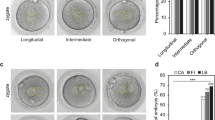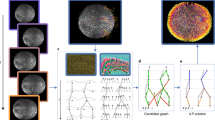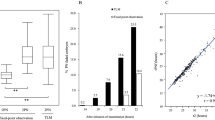Abstract
ONE of the most fundamental problems, both for genetics and embryology, is that of whether the genes in the nuclei of differentiated tissues retain their full range of capacities, or whether some irreversible alteration affects them. The most direct method of investigating this is to develop techniques which permit the transplantation of nuclei from differentiated cells of one kind into enucleated cells of different developmental potentialities. Briggs and King1 have reported some attempts in this direction, in which nuclei from blastulæ or early gastrulæ of frogs were injected into uncleaved but fertilized frogs' eggs from which the zygote nucleus had been removed. Nuclei from blastulæ permitted the full differentiation of a normal embryo in a fairly high proportion of cases, those from early gastrulæ in a smaller proportion, whereas those from determined (but not yet differentiated) tissues gave little success, though it remained uncertain whether this was due to technical difficulties or to an incapacity of the genes.
This is a preview of subscription content, access via your institution
Access options
Subscribe to this journal
Receive 51 print issues and online access
$199.00 per year
only $3.90 per issue
Buy this article
- Purchase on SpringerLink
- Instant access to full article PDF
Prices may be subject to local taxes which are calculated during checkout
Similar content being viewed by others
References
Briggs, R., and King, T. J., Proc. U.S. Nat. Acad. Sci., 38, 455 (1952); J. Exp. Zool., 122, 485 (1953).
Author information
Authors and Affiliations
Rights and permissions
About this article
Cite this article
WADDINGTON, C., PANTELOURIS, E. Transplantation of Nuclei in Newt's Eggs. Nature 172, 1050–1051 (1953). https://doi.org/10.1038/1721050a0
Issue date:
DOI: https://doi.org/10.1038/1721050a0
This article is cited by
-
Nuclear chimaeras in the newt
Experientia (1958)



